
Currently, there are 58,742 educational establishments that provide extra cumulative reductions (ranging from 2% to 25%). To determine the applicable discount for all staff members at your educational institution, please access your personal Infoworks account.




Continuing Education Program
Management of Dangerous Waste of Hazard Levels I – IV
We are able to apply a discount from your educational institution to this offer (the amount depends on the number of your colleagues who have completed Infowrok courses).
Currently, there are 58,742 eligible educational institutions for additional discounts (ranging from 2% to 25%). To determine the applicable discount for all staff members at your educational institution, please log in to your personal Infoworks account.


Course for professional growth
Providing psychological and pedagogical support for children with THD in preschool settings
We can apply a discount from your educational institution to this offer (the amount of the discount depends on the number of your colleagues who have completed Infoworks courses).
Currently, 58,742 educational institutions are eligible for additional discounts (ranging from 2% to 25%). To find out the exact discount available to all employees of your educational institution, please log in to your personal Infoworks account.


Organizing the Concerns of Educators: Developing a Forward-Thinking Perspective
Breakdown of the Presentation by Slide:


Slide 1: The Scope of Astronomy
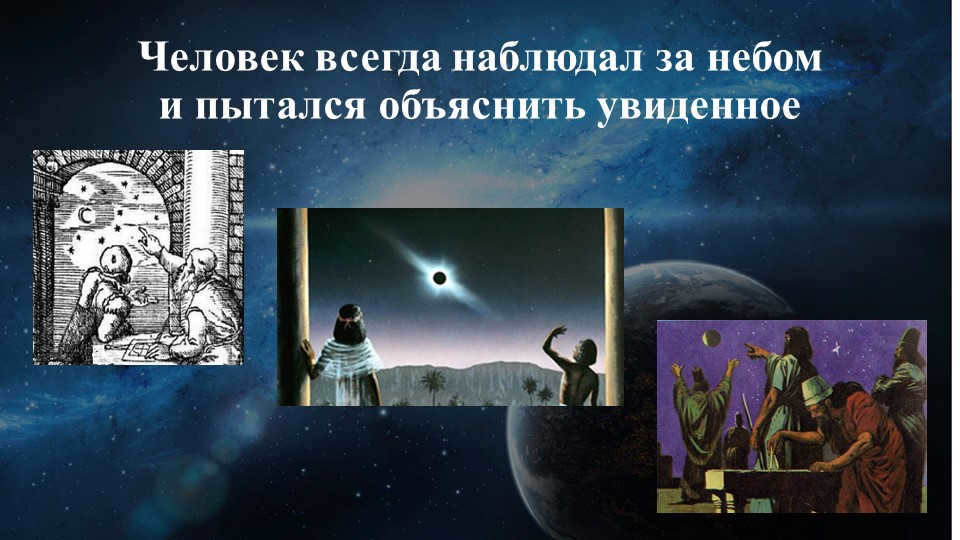
There are three Auras slides.
The field of Astronomy
(astron – star, nomos – law)
is a scientific discipline that focuses on the examination of the arrangement, movement, genesis, and evolution of heavenly bodies, their systems, and the entire Universe.

Slide 4: The tasks of astronomy include:
- Explaining and predicting astronomical phenomena
- Studying physical processes happening inside planets, on their surfaces, and in their atmospheres
- Investigating the movement of celestial bodies
- Discovering new objects in the solar system and studying their motion
- Examining the processes occurring on the Sun and predicting their future development
- Studying the evolution of other stars and comparing them to the Sun
The purpose of astronomy is to investigate the origin, structure, and development of the universe.

Slide number 5: The universe encompasses the most extensive expanse of space, comprising all celestial entities and their intricate systems.
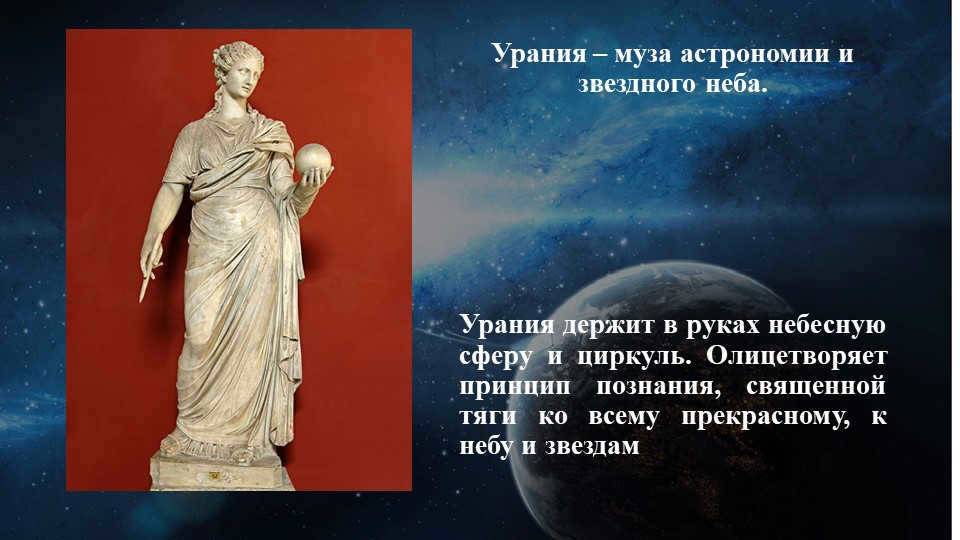
Urania, the sixth muse, is the embodiment of astronomy and the vast expanse of the night sky.
In her hands, Urania holds both a celestial sphere and a circlet, symbolizing her connection to the heavens. She represents the pursuit of knowledge, an insatiable thirst for beauty, and a deep reverence for the celestial realm.

There are 7 different sections in the field of astronomy:
Practical astronomy focuses on the various techniques used to determine geographic coordinates, celestial coordinates, precise time calculations, and azimuths.
Celestial mechanics explores the movement and behavior of celestial bodies.
Comparative planetology is a field of study that focuses on the examination of planets, their satellites, and the solar system as a whole, as well as other planetary systems with their exo-planets. This area of research encompasses various sciences, including astrophysics, which is a branch of astronomy that investigates the physical phenomena and chemical processes that occur in celestial bodies, their systems, and outer space.

There are 8 sections of astronomy:
1. Stellar astronomy – this section studies the patterns in the spatial distribution and motion of stars within our galaxy and other stellar systems.
2. Galaxy – this section focuses on studying the properties and distribution of galaxies.
3. Cosmology – this section is dedicated to studying the origin, structure, and evolution of the Universe as a whole.
4. Cosmogony – this section focuses on studying the origin and development of celestial bodies and systems.
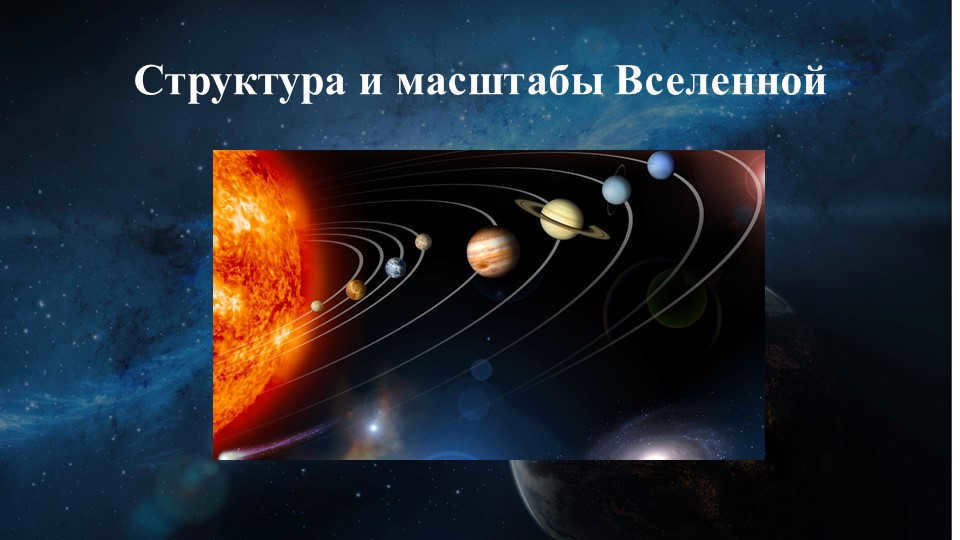
Answer the questions on the 10th slide:
– What is the focus of study in astronomy?
– What issues does astronomy address and resolve?
– How did the field of astronomy come into existence? Describe the key stages in its development.
– What are the different branches of astronomy? Provide a brief description of each.
– How does astronomy contribute to practical endeavors of humanity?

For your eleventh slide homework, please make sure to read and memorize the outline for section § 1. Additionally, you will need to complete the project titled “Tree of Development of Astronomy.”

At present, 58,742 educational institutions have the opportunity to receive extra cumulative discounts ranging from 2% to 25%. To determine the specific discount applicable to all staff members of your educational institution, please log in to your personal Infoworks account.


Advanced training program
Management of hazardous waste categories I – IV
We can apply a special discount for your educational institution in addition to the existing discount (the amount of discount depends on the number of your colleagues who have completed Infowork courses).
Currently, there are additional cumulative discounts available (ranging from 2% to 25%) for 58,742 educational institutions. To determine the discount applicable to all employees of your educational institution, please log in to your personal Infoworks account.




Advanced training program
Supporting children with THD in preschool settings: psychological and pedagogical approaches
We can apply a special discount for your educational institution (based on the number of colleagues who have completed Infoworks courses)
Currently, 58,742 educational institutions are eligible for additional discounts (ranging from 2% to 25%). To find out the specific discount available for all employees at your educational institution, please log in to your personal Infoworks account.


Organizing the Concerns of Teachers: Developing a Perspective for the Future
Overview of the talk through individual slides:

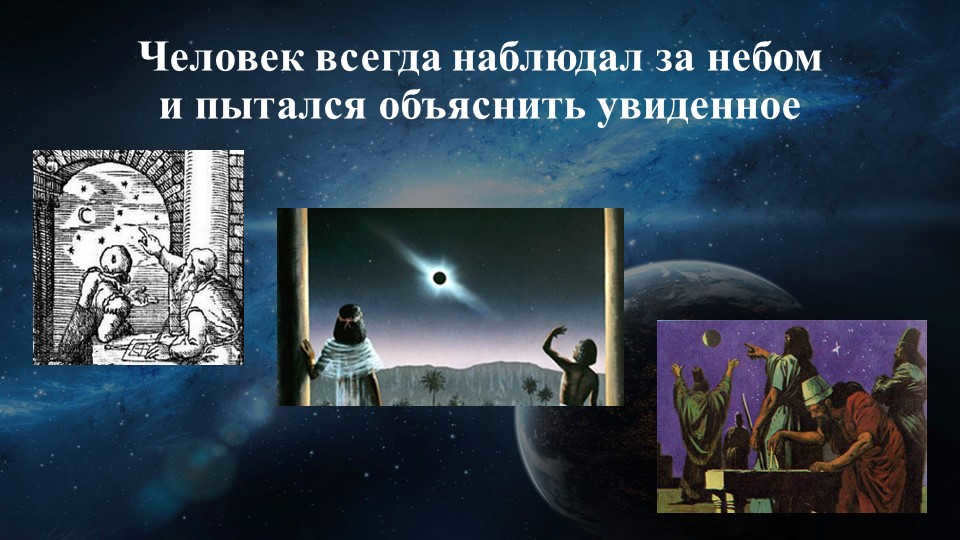
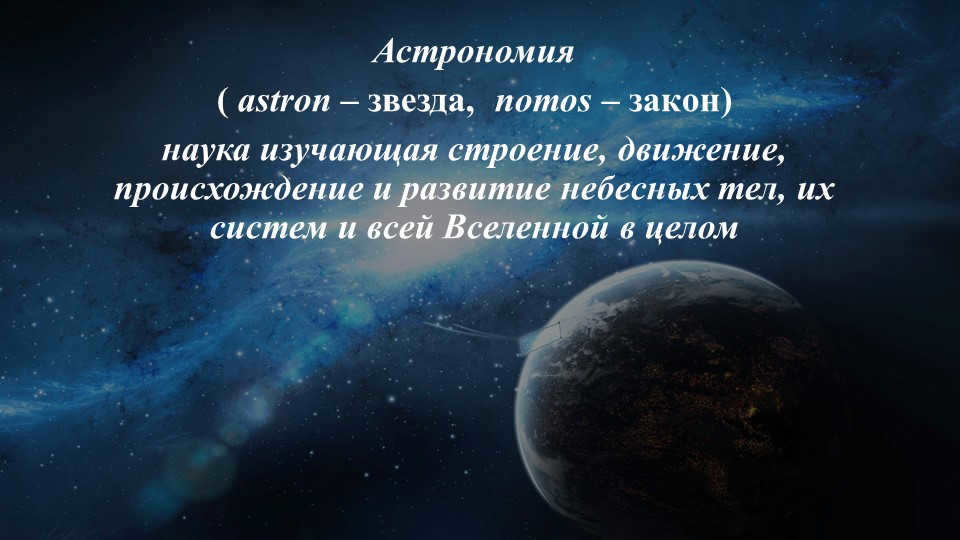
There are three types of auras in slides.
One of the most interesting fields of study is Astronomy
(astron – meaning star, nomos – meaning law).
This scientific discipline focuses on understanding the structure, motion, origin, and evolution of celestial bodies, their systems, and the Universe as a whole.

Slide 4: The goals of astronomy include:
– providing explanations and making predictions about astronomical phenomena;
– investigating the physical processes that occur within planets, on their surfaces, and in their atmospheres;
– analyzing the movement of celestial bodies;
– discovering new objects in the solar system and studying their motion;
– studying the processes occurring on the Sun and making forecasts about their future development;
– examining the evolution of other stars and comparing them to the Sun.
Astronomy aims to explore the origin, structure, and evolution of the universe.


Slide 5: The universe encompasses the vast expanse of space, containing all celestial entities and their interconnected systems.
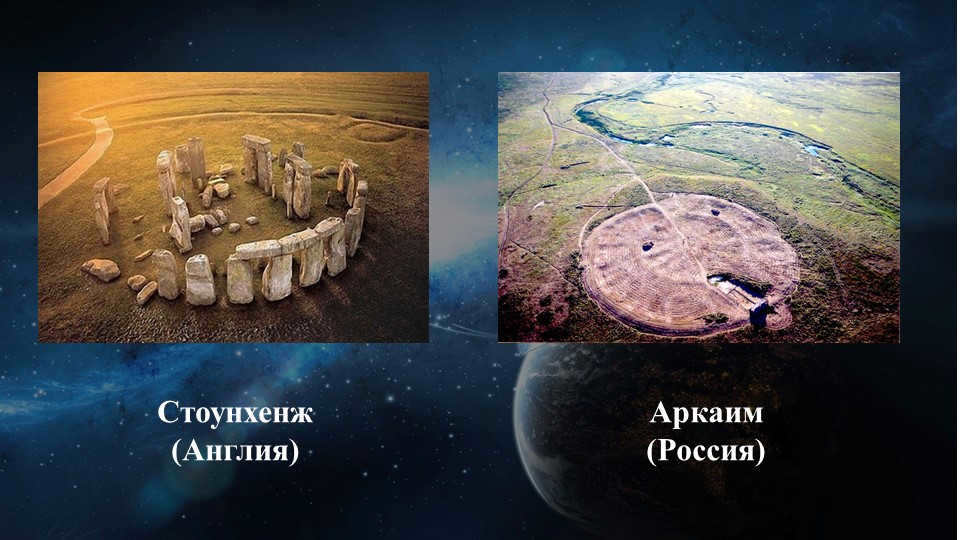
Slide 7: Geography, Ecology, Astronomy, Geology, Physics, Cosmonautics, Literature, Chemistry, Biology, Mathematics, Informatics
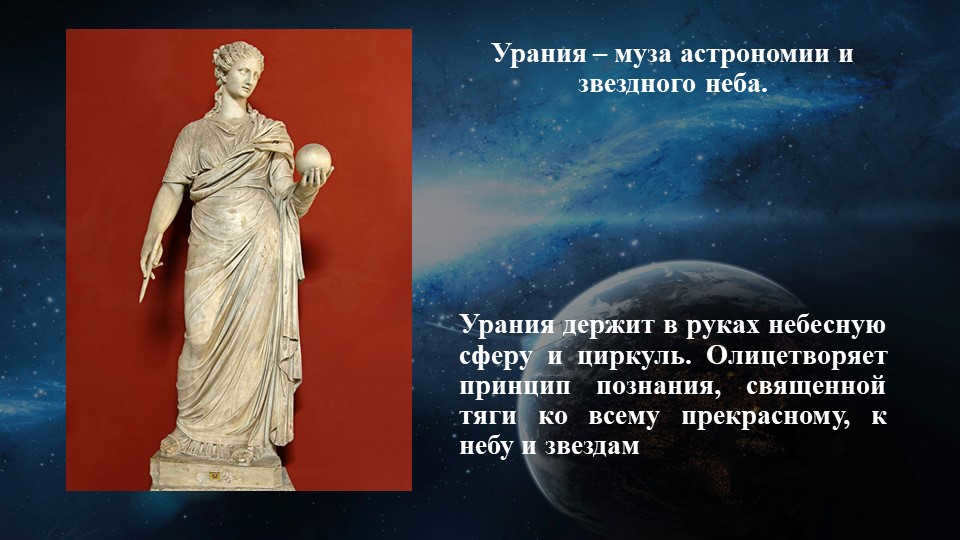
Urania, the muse of astronomy and stargazing, is depicted in the 8th slide. She can be seen holding a celestial sphere and a circlet, which symbolizes her embodiment of knowledge and her sacred desire for all things beautiful, including the sky and the stars.

There are 9 distinct sections within the field of astronomy:
One of these sections is practical astronomy, which focuses on explaining the various methods used to determine geographic coordinates, celestial coordinates, exact time calculations, and azimuth findings.
Another section within astronomy is celestial mechanics, which centers around studying the movements of celestial bodies.
Comparative planetology is a collection of scientific disciplines that examine the planets and their moons, alongside the solar system as a whole and other planetary systems with their exoplanets.
Furthermore, astrophysics is a branch of astronomy that investigates the physical phenomena and chemical processes that take place in celestial bodies, their systems, and outer space.

There are 10 sections in astronomy that focus on different aspects of the field. One of these sections is stellar astronomy, which involves the study of patterns in the spatial distribution and movement of stars within our galaxy and other stellar systems.
Another section is cosmology, which is dedicated to understanding the origin, structure, and evolution of the Universe as a whole.
Additionally, there is a section called cosmogony, which specifically examines the origin and development of celestial bodies and systems.
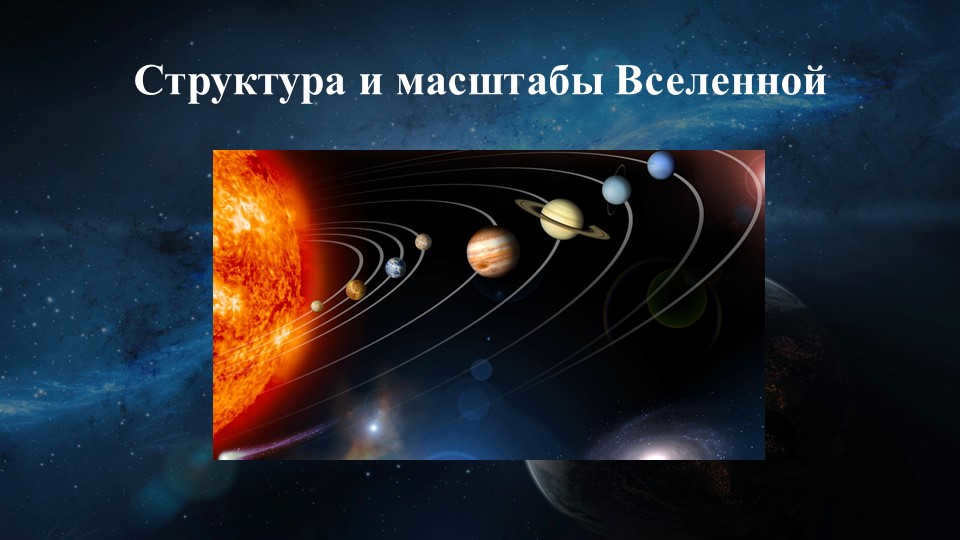

Slide 13: Respond to the following inquiries:
– What is the subject of study in astronomy?
– Which issues does astronomy tackle?
– How did the discipline of astronomy come into existence? Describe the major stages of its evolution.
– What are the different branches of astronomy? Provide a brief overview of each.
– What is the importance of astronomy in practical human endeavors?

14 slide Homework
§ 1 (read, memorize the outline)
Project "The tree of development of astronomy"
The chosen document for viewing What does astronomy study.docx
Subject: "What does astronomy study?"
• Personal: Discuss the human desire for knowledge as the most significant unfulfilled desire, understand the difference between mythological and scientific consciousness.
• Meta-predictive: Formulate the concept of "the subject of astronomy"; demonstrate the independence and importance of astronomy as a scientific field.
– The origin of astronomy in relation to practical requirements is a topic of interest.
– The interdependence and reciprocal impact between astronomy and other fields of study are worth exploring.
The primary content covered in this lesson
I. Introduction to new material
1. The subject matter of astronomy
Throughout history, humanity has been on a quest to unravel the enigma of the world that surrounds them, and to ascertain their position in the vast expanse of the Universe, also referred to as Cosmos by ancient Greek philosophers. Consequently, individuals have closely observed the daily rising and setting of the Sun, as well as the orderly progression of the Moon’s phases, as their lives and labor were intricately intertwined with these celestial events. Furthermore, people have displayed a keen interest in the daily trajectory of the stars, while simultaneously being awed by the unpredictability of phenomena such as lunar and solar eclipses, as well as the appearance of brilliant comets. In essence, individuals have endeavored to comprehend the underlying regularity of these celestial occurrences, and to gain insight into their place within the limitless cosmos.
Astronomy (derived from the Greek words astron – star, nomos – law) – is the scientific discipline that investigates the composition, movement, origin, and evolution of celestial bodies, as well as their systems and the Universe in its entirety.
Astronomy is a significant field of human endeavor that provides a comprehensive understanding of the patterns and developments in nature.
The primary objective of astronomy is to investigate the origins, composition, and changes of the Universe.
Some of the key tasks in astronomy include:
1) Interpreting and predicting celestial events such as solar and lunar eclipses, periodic comet appearances, asteroid passages, and close encounters with large meteoric bodies or comets near Earth.
2) Examining the physical processes occurring within planets, their surfaces, and atmospheres in order to gain a deeper understanding of the structure and evolution of our own planet.
3) The exploration of celestial bodies’ movement helps us understand the stability of the solar system and the potential risk of Earth colliding with asteroids and comets.
4) Discovering new objects in the solar system and examining their motion.
5) Analyzing the processes occurring on the Sun and predicting their future development, which is crucial for all life on Earth.
6) Investigating the evolution of other stars and comparing them to the Sun to gain insight into our luminary’s developmental stages.
Therefore, astronomy focuses on studying the structure and evolution of the Universe.
The universe encompasses the vast region of space containing all celestial bodies and their systems, available for scientific examination.
2.The emergence of astronomy
The study of celestial bodies, known as astronomy, has been a part of human culture since ancient times. Even in primitive societies, people observed the night sky and documented their findings by drawing on cave walls. As human civilization progressed and agriculture became a central part of life, the need to measure and track time became essential. Ancient civilizations noticed patterns in the movements of the stars and the changing phases of the Moon, allowing them to develop a system of timekeeping based on days, months, and years. This knowledge was crucial for determining the right time to sow crops and harvest them, ensuring a successful agricultural cycle.
In the earliest written records (3rd – 2nd millennium BC) of the earliest civilizations in Egypt, Babylon, China, India, and America, there are indications of astronomical activity. Our ancestors in different parts of the world have left behind structures made of stone blocks and processed poles, aligned with astronomically significant directions. These directions align with points of sunrise on the days of equinoxes and solstices, among other things. Similar stone structures used for solar-lunar observations have been discovered in southern England (Stonehenge), in the southern Urals of Russia (Arkaim), and on the shores of Lake Yanovo near Polotsk. These ancient observatories are estimated to be around 5-6 thousand years old.
3. Importance and Interconnection of Astronomy with Other Sciences
Throughout human observations of the world and the cosmos, the study and synthesis of acquired knowledge, astronomy has been interconnected with various scientific disciplines, such as:
– Mathematics (utilizing techniques of approximate calculations, substituting trigonometric functions with angle values expressed in radians);
– Physics (analyzing motion in gravitational and magnetic fields, describing states of matter, radiation processes, and induction currents in plasma found in celestial objects);
– Chemistry (identifying new chemical elements in star atmospheres, advancing spectral methods, and studying the chemical properties of gases that compose celestial bodies).
– concerning biology (theories about the origin of life, adaptability and evolution of living organisms; contamination of outer space with matter and radiation);
– regarding geography (the behavior of clouds on Earth and other planets; tides in the ocean, atmosphere, and Earth’s crust; the evaporation of water from the ocean’s surface due to the Sun’s radiation; the uneven heating of different parts of the Earth’s surface by the Sun, creating atmospheric circulation);
– related to literature (ancient myths and legends as literary works that celebrate Urania, the patron muse of astronomy; works of science fiction).
– 4. Divisions of astronomy
Such close interaction with the aforementioned sciences has facilitated the rapid advancement of astronomy as a discipline. At present, astronomy encompasses various branches that are closely interconnected. These branches differ in terms of their research topics, methods, and approaches to understanding.
– The accurate and scientific concept of the Earth as a celestial body originated in ancient Greece. In 240 BC, the Alexandrian astronomer Eratosthenes made highly precise calculations of the Earth’s size by observing the Sun. The expansion of trade and navigation necessitated the development of orientation techniques, determining the observer’s geographical position, and precise measurements based on astronomical observations. Practical astronomy emerged as the solution to these challenges.
– The use of increasingly advanced telescopes in astronomical observations led to the discovery of new information not only about the bodies within our solar system, but also about the distant world of stars. In 1655, Huygens made a groundbreaking observation of the rings of Saturn and identified its satellite Titan. In 1761, Mikhail Vasilyevich Lomonosov discovered the atmosphere of Venus and conducted extensive research on comets. By comparing other planets and satellites to Earth, scientists developed the field of comparative planetology, which has furthered our understanding of the universe.
– The discovery of spectral analysis opened up significant and growing possibilities for studying the physical properties and chemical makeup of stars, making it the primary method for investigating the physical nature of celestial objects in the 19th century. The branch of astronomy that focuses on the study of physical phenomena and chemical processes occurring in celestial bodies, their systems, and outer space is known as astrophysics.
– The advancement of astronomy is closely linked to the enhancement of observational methods. Significant achievements have been made in the development of novel radiation detectors. Photomultiplier tubes, electron-optical converters, electronic photography, and television techniques have significantly improved the precision and sensitivity of photometric observations and have expanded the range of recorded radiation. This has allowed us to observe the distant galaxies billions of light-years away. As a result, new branches of astronomy have emerged, such as stellar astronomy, cosmology, and cosmogony.
The period from 1837 to 1839 is widely recognized as the birth of stellar astronomy, as it was during this time that significant breakthroughs were made independently in Russia, Germany, and England in determining the distances to stars. Stellar astronomy is a field of study that focuses on understanding the patterns of spatial distribution and motion of stars within our own stellar system, the Galaxy, as well as exploring the properties and distribution of other stellar systems.
· Cosmogony – A branch of astronomy that investigates the origin and evolution of celestial bodies and systems. Given that all celestial bodies have their beginnings and undergo changes, ideas about their development are closely connected to ideas about the nature of these bodies in general. The study of stars and galaxies relies on observations of numerous similar objects that emerge at different times and stages of development. Modern cosmogony heavily relies on the principles of physics and chemistry.
5. Structure and Scale of the Universe
Watching the video “Planets”

Astronomy, one of the oldest and most captivating fields of study, explores the objects and phenomena present in the vast expanse of the Universe. In our initial session, we will delve into the definition and scope of astronomy, acquainting ourselves with its key characteristics. Additionally, we will trace the origins of this discipline and outline its major stages of advancement. Furthermore, we will discuss the composition and magnitude of the cosmos.
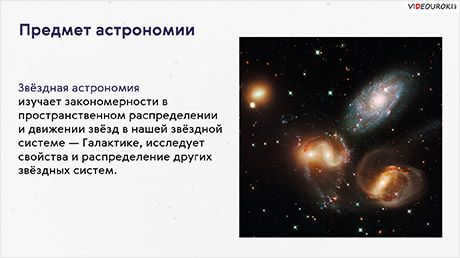
At the moment, you are unable to watch or share this instructional video with your students
In order to access this and other video lessons included in the package, you will need to add it to your personal account.
Unlock extraordinary possibilities


Outline of the Lesson “The Field of Astronomy”
Astronomy is a captivating and ancient discipline that explores the various entities and occurrences observed in the vast expanse of the universe. Its roots can be traced back to the distant Stone Age, specifically around the period of the 6th to 3rd millennium BC.
Throughout the course of history, humanity has tirelessly endeavored to comprehend the essence of these observed entities and phenomena, striving to unravel the enigmas of the surrounding world and ascertain its position within it.
During the dawn of civilization, numerous societies possessed distinctive cosmological myths. These myths narrated the gradual emergence of the cosmos, which is derived from the Greek word “order”. They detailed the formation of the heavens, the earth, the seas, the rivers, the flora and fauna, as well as the emergence of humanity itself.
The practical need for counting time led to the regular observation of the movement of the luminaries. People relied on the strict periodicity of the Sun and the Moon to establish basic units of time, such as the day, month, and year. These observations also allowed for the calculation of the onset of specific seasons.
For instance, in Ancient Egypt, priests could predict the start of agricultural work by observing the appearance of Sirius, the brightest star, in the pre-morning sky, which signaled the spring floods of the Nile.
In ancient Arabia, the phases of the moon played a crucial role in timekeeping, as most work was done at night due to the intense heat.

And in countries where navigation is advanced, significant attention has been dedicated to the techniques of star-based orientation.
Currently, numerous ancient stone constructions aligned with astronomically important directions are discovered in various parts of the planet. These directions often include the points of sunrise and sunset during the equinoxes and solstices. It is remarkable to note that such structures have been unearthed globally. For instance, in Southern England, we have Stonehenge, while in the Southern Urals of Russia, we find Arkaim. The age of these ancient observatories dates back 5-6 thousand years.
Ancient Greece saw a shift from simple contemplation and naive interpretation of natural phenomena to a more scientific approach in understanding their causes. This development in the sixth century BC marked the rapid growth of philosophy as a science of nature, with astronomy becoming an essential component of human culture.
Interestingly, the term “astronomy” originates from two ancient Greek words: “astron” meaning star, and “nomos” meaning science.
In the present day, astronomy is widely recognized as a fundamental science that investigates the structure, motion, origin, and evolution of celestial bodies, their systems, and the Universe as a whole.
It is worth noting that astronomy is among the few sciences that has a patron muse, Urania.

The field of astronomy has always been intertwined with mathematics. Even in ancient times, the Greeks had the understanding that the Earth is a celestial body. It is interesting to note that the word “geometry” in Greek means “surveying,” which highlights the connection between mathematics and the study of the Earth. A notable example of this connection is seen in the work of Eratosthenes, an Alexandrian scientist who, in 240 B.C., accurately determined the size of the globe based on astronomical observations of the Sun’s height at noon.
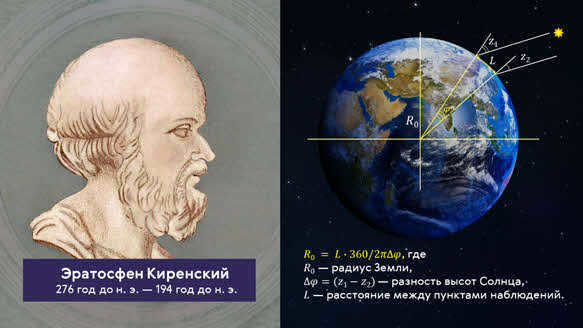
Furthermore, the peculiar but customary division of the circle into 360 degrees also has its roots in astronomy. This tradition dates back to the 3rd century BC and lasted until the mid-16th century, spanning approximately 1,500 years. During this time, the geocentric model of the universe, as proposed by Claudius Ptolemy, held sway. According to this model, the Earth was considered to be the center of the universe, with all celestial bodies, including the Sun, orbiting around it. Thus, it was believed that the Sun completed one full rotation around the Earth, covering a distance of one degree, every day.
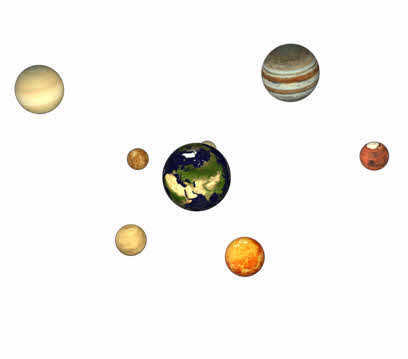
With the advancement of trade and navigation, astronomical observations provided people with the ability to navigate in unfamiliar terrain and at sea, as well as accurately determine the time. All of these tasks were addressed through the field of practical astronomy.
In the 16th and 17th centuries, certain scientists began to question the geocentric model proposed by Ptolemy. One significant work, published in 1543, was Nicholas Copernicus’ “On the Revolutions of the Celestial Spheres,” in which he argued that the center of our solar system is not the Earth, but rather the Sun. This marked the beginning of the heliocentric doctrine, which provided a key to understanding the Universe.
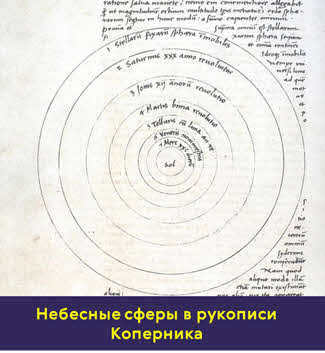
Astronomy has played a vital role in the advancement of mathematics and mechanics, two important branches of physics that have practical applications for humans. These observations of celestial bodies and the need to predict their positions have roots in philosophy, the original science of nature. Throughout history, astronomy, mathematics, and physics have remained closely interconnected. This is evident in the works of renowned scientists like Galileo Galilei and Isaac Newton, who made significant contributions to all three fields.
Furthermore, Galileo Galilei’s invention of the telescope provided undeniable evidence for Copernicus’ heliocentric theory through his meticulous observations and calculations.
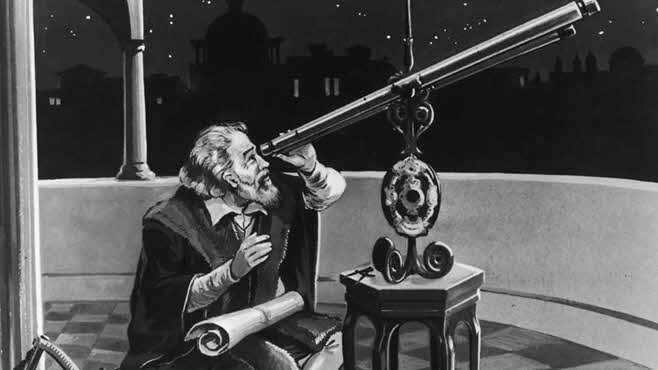
In the late 17th century, Newton introduced his renowned law of universal gravitation, which opened up the opportunity to utilize mathematical techniques in examining the movement of celestial bodies within the solar system.
Moreover, Johannes Kepler, a notable astronomer, deduced three laws of planetary motion based on his studies of Mars and other celestial entities, which significantly contributed to the advancement of our understanding of the solar system’s structure.
Celestial mechanics is the branch of astronomy that focuses on the movement of celestial bodies. This field not only helps to explain these movements, but also allows for accurate calculations of their positions and motions. As a result, astronomy became one of the leading sciences during that time.
As time went on, advancements in telescope technology allowed for more sophisticated astronomical observations. Galileo’s basic telescope was improved by Kepler and later by Huygens. In 1655, Huygens not only observed the rings of Saturn, but also discovered its moon Titan.
In 1761, the renowned Russian scientist Mikhail Vasilyevich Lomonosov made significant discoveries in astronomy. He discovered the atmosphere of Venus and conducted research on comets.

Taking other planets and satellites into account and using the Earth as a point of reference, scientists engaged in comparative planetology. This field of study involves comparing various celestial bodies in terms of their shapes, distances, sizes, motions, and even chemical compositions.
During the early 19th century, there was a belief that the advancement of astronomy had reached its limits. The French philosopher Auguste Comte famously expressed this sentiment, stating that while we may be able to determine the physical characteristics and movements of celestial bodies, it would be impossible to study their chemical compositions using any available means.
The decision was severe. However, in 1859, German scientists Robert Bunsen and Gustav Kirchhoff invented a technique for determining the chemical composition of a substance by analyzing its spectrum (spectral analysis). This event marked the birth of a new branch of physics – spectroscopy, which investigates the spectra of electromagnetic radiation. Moreover, the application of spectral analysis in astronomy marked the beginning of the widespread utilization of physics in the exploration of celestial bodies and led to the establishment of a new field of study – astrophysics.
During approximately the same period (approximately between 1837-1839), scientists in Russia, Germany, and England made independent breakthroughs in collecting initial data for measuring the distances to stars. This marked the inception of stellar astronomy. Stellar astronomy focuses on examining patterns in the spatial arrangement and movement of stars within our own stellar system, the Galaxy, while also investigating the characteristics and distribution of other stellar systems.

Throughout history, astronomy has always had a profound impact on human civilization, but its most significant contribution lies in shaping our scientific worldview. This can be observed by examining the progress made in different branches of astronomy, which have always been closely intertwined with other scientific disciplines. For instance, the invention of atomic clocks, which boast an astonishing accuracy of 10 -15 seconds, has enabled us to study the Earth’s rotation in terms of annual and secular changes, thereby allowing us to refine our units of time measurement.
The advancement of rocket technology has opened up outer space for exploration, revolutionizing our understanding of the universe. This breakthrough has greatly expanded our capabilities in studying celestial mechanics, as we are now able to precisely calculate the orbits of both unmanned and manned spacecraft of various purposes.
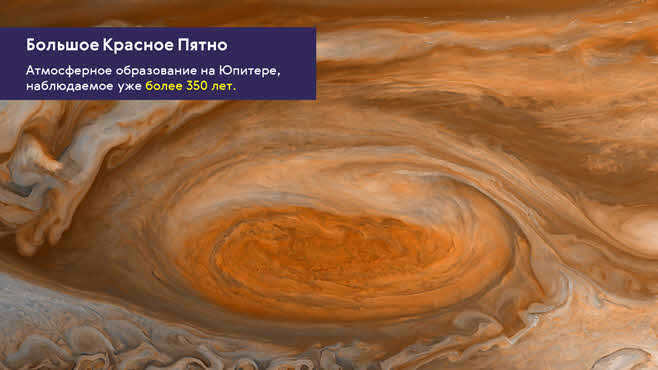
The advancement of astrophysics in recent years has spurred the development of cutting-edge technologies. For instance, the exploration of the Sun and other stars as energy sources has led to the concept of creating controlled thermonuclear reactors. Additionally, the investigation of solar prominences has inspired the idea of using a magnetic field to thermally insulate superhot plasma, resulting in the creation of magnetohydrodynamic generators.
It is evident that the progress in science during the past few decades has demonstrated the inseparable connection between astronomy and physics, enabling us to effectively address numerous global issues. Hence, it is no coincidence that, in the early 21st century, three Nobel Prizes in Physics were awarded to scientists for their groundbreaking research in astrophysics and cosmology.
You are already aware that the Sun, the Earth, the Moon, and other celestial bodies such as planets, satellites, dwarf planets, and comets revolve around each other within our solar system. Collectively, they form an intricate system that exists within the vast expanse of space. However, the Sun itself is not stationary. It, along with countless other stars, orbits around the central point of our expansive star system, known as the Milky Way Galaxy. The star closest to our solar system is located at such a great distance that it takes over four years for its light to reach the Earth. Furthermore, the Milky Way Galaxy is so immense that it would take approximately 100,000 years for light to traverse its entire volume.
Nevertheless, it is important to note that the universe extends far beyond the boundaries of our galaxy. There are billions of other star systems scattered throughout space. In fact, the light from the most remote known galaxies takes more than 13 billion years to reach our planet.
As humanity enters the era of space exploration and prepares for interplanetary travel, it is imperative not to overlook the significance of our home planet, Earth. The Earth is a truly remarkable planet, serving as the cradle of human civilization. Given the unique nature of our planet, it is our responsibility to prioritize its preservation and care.
The field of astronomy is dedicated to understanding and forecasting astronomical phenomena. It encompasses the study of the physical processes occurring within planets, both on their surfaces and in their atmospheres. Additionally, astronomy delves into the movement of celestial bodies, the discovery of new objects within our solar system, and the examination of their trajectories. Furthermore, it investigates the processes taking place on the Sun and endeavors to predict their future development. Finally, astronomy seeks to comprehend the evolution of other stars and draw comparisons with our own Sun. Ultimately, the overarching goal of astronomy is to unravel the origins, structure, and evolution of the vast Universe.
The universe is defined as the vast expanse of space that encompasses all celestial bodies and their systems, providing a vast field of study.
Urania, the muse of astronomy and the starry sky, is depicted holding a celestial sphere and a circlet. She represents the pursuit of knowledge, the reverence for beauty, and the wonders of the sky and stars.
Practical astronomy is a field within the larger discipline of astronomy that focuses on the practical applications and methods used to determine geographic coordinates, calculate accurate time, and find the azimuth of celestial luminaries. This section of astronomy provides the tools and techniques necessary for astronomers to navigate and locate objects in the night sky.
Celestial mechanics is another branch of astronomy that specifically studies the motion and dynamics of celestial bodies. This field of study delves into the laws of motion and gravitation that govern the movement of planets, stars, and other celestial objects. By understanding the principles of celestial mechanics, astronomers can accurately predict and model the behavior of these objects.
Comparative planetology is a multidisciplinary field that focuses on the study of planets and their satellites, as well as the solar system as a whole. This branch of astronomy explores the similarities and differences between different planets and their moons, and seeks to understand the formation and evolution of planetary systems. Comparative planetology also extends beyond our solar system, examining other planetary systems and their exoplanets.
Astrophysics is an integral part of astronomy that investigates the physical phenomena and chemical processes occurring within celestial bodies and their systems. This field of study combines principles from physics and astronomy to analyze and understand the properties and behavior of stars, galaxies, and other astronomical objects. Astrophysics also explores the nature of space itself, including topics such as dark matter, black holes, and the expansion of the universe.
Structure and scale of the Universe
Answer the following questions:
– What is the focus of astronomy?
– What are the problems that astronomy aims to solve?
– How did the field of astronomy come into existence? Describe the key stages of its development.
– What are the different branches of astronomy? Provide a brief overview of each.
– What is the significance of astronomy in practical human activities?
Homework § 1 (read, learn an outline) Project “Tree of development of astronomy”.
Regarding the subject: systematic advancements, demonstrations, and records

Astronomy Lesson Presentation: “Exploring the Universe through Physical Methods”
This presentation is suitable for both physics and astronomy lessons. It specifically focuses on the topic of “Atoms and Stars” for 9th grade students. I have utilized this material in my elective course called “Entertaining Universe” for 9th graders. Enjoy!
Designing a lesson on astronomy: An Introduction to Astronomy for 11th graders
Creating a lesson plan for astronomy: Introducing the fascinating world of astronomy to students in the 11th grade

Program for teaching astronomy: “The Incredible World of Astronomy”
In most school curriculums, astronomy is often given limited time. However, this field of study holds great significance, as it plays an integral role in shaping students’ worldview. Hence, it is crucial to prioritize astronomy education.
Development of the methodology for the “Astronomy” section of the educational program: Different levels of student involvement in studying “Astronomy”
Currently, the astronomy course in schools is unfortunately overlooked and given less priority in the curriculum. I believe this is unjust. Astronomy holds importance from both an educational and personal perspective.

Astronomy: Its Subject and Scope. Different Branches of Astronomy. Contemporary Concept of the Cosmos
Slide deck for the class on “Fundamentals of Astronomy”.

Lesson plan about the subject of “What does astronomy study?”
This document outlines a lesson plan focusing on the topic of “What does astronomy study?”

Presentation for the astronomy class. Lesson topic: “The transforming perspective of the celestial sky over the course of a year.” The material enables self-study of this subject.
Presentation for the astronomy class. Lesson topic: “The transforming perspective of the celestial sky over the course of a year.” The material enables self-study of this subject.
Astronomy is a captivating and enigmatic field of study. Even though it is often only briefly touched upon in schools, people remain fascinated by it. Hence, I will embark on a series of posts, beginning with this one, to delve into the fundamentals of this science and explore intriguing questions that arise during its exploration.
The origins of astronomy
Astronomy has a long and fascinating history, dating back thousands of years. The study of celestial objects and their movements has been a subject of great interest for many ancient civilizations, including the Egyptians, Greeks, and Babylonians.
One of the earliest recorded observations of the stars and planets can be found in ancient Mesopotamia, where clay tablets dating back to around 1600 BCE contain detailed records of celestial events. These observations were used to track the movements of celestial bodies and develop calendars.
The ancient Egyptians also had a deep understanding of astronomy and its relationship to their religious beliefs. They built structures such as the Great Pyramid of Giza and the Temple of Karnak to align with certain celestial events, serving as both religious and astronomical observatories.
In ancient Greece, philosophers such as Aristotle and Plato made significant contributions to the field of astronomy. They proposed theories about the nature of the universe and the movements of the stars and planets.
During the Islamic Golden Age, astronomers such as Al-Kindi, Al-Farabi, and Ibn al-Haytham made important advancements in the field. They developed new instruments for observing the night sky and made accurate measurements of celestial objects.
The Renaissance period saw a renewed interest in astronomy, with scientists such as Nicolaus Copernicus and Galileo Galilei challenging the prevailing geocentric model of the universe. Copernicus proposed a heliocentric model, with the Sun at the center, while Galileo’s observations with his telescope provided evidence to support this theory.
Today, astronomy continues to be a thriving field of scientific research. Modern astronomers use advanced telescopes and space probes to study the universe and uncover its mysteries.
The Babylonians achieved notable advancements in the field of astronomy (as well as astrology). They developed a mathematical system based on a base-60 numeral system (in contrast to our base-10 system), which was likely influenced by the fact that the ancient Babylonians counted using their fingers and toes, resulting in a total of 60 digits. This unique numerical system had significant implications for astronomers, as it led to the adoption of a base-60 representation for measuring time and angles. For instance, instead of dividing an hour into 100 minutes, they divided it into 60 minutes. Similarly, they divided a degree into 60 minutes, and the entire celestial sphere into 360 degrees (as opposed to 1000). Furthermore, it was the Babylonians who first established the zodiac on the celestial sphere.
The celestial sphere is an imaginary auxiliary sphere of a chosen radius where the celestial bodies are projected, and it is used for solving different astrometric problems. The observer’s eye is usually taken as the center of the celestial sphere. For an observer on Earth’s surface, the rotation of the celestial sphere replicates the daily movement of the celestial bodies in the sky.
The Babylonians were aware of 7 “planets” – the Sun, Moon, Mercury, Venus, Mars, Jupiter, and Saturn. It is believed that they were the ones to introduce the seven-day week, with each day being dedicated to a specific celestial body. The Babylonians also developed the ability to predict eclipses, which the priests effectively used to strengthen people’s belief in their supposed supernatural powers.
What’s up there?
First and foremost, let’s establish our “Universal Address” (applicable for Russians):
- country: Russia
- planet: Earth
- system: Solar
- galaxy: Milky Way
- group: Local group
- cluster: Virgo supergroup
- Metagalactics
- Our Universe
Solar System
You and I reside on one of the eight immense planets that orbit the Sun. The Sun, being a star, undergoes thermonuclear reactions, resulting in a tremendous amount of energy.
A planet is a celestial body with a spherical shape that is massive enough to be influenced by gravity but does not undergo these aforementioned reactions. There are only eight main planets:
- Mercury
- Venus
- Earth
- Mars
- Jupiter
- Saturn
- Uranus
- Neptune
With the exception of Mercury and Venus, most of these planets have satellites, which are smaller “planets” that revolve around the larger planet. Earth has its own satellite, the Moon, whose exquisite surface is displayed in the first image.
Additionally, within our Solar System, there exist dwarf planets. These are compact celestial bodies that possess an almost spherical shape and are not considered satellites of larger planets. They lack the necessary mass to “clear” their orbital paths in the Solar System. Currently, there are a total of 5 recognized dwarf planets, with one of them, Pluto, having been classified as a major planet for over 70 years:
In the Solar System, there are also celestial bodies that resemble planets in composition – asteroids. These small objects are primarily found in the main asteroid belt, located between Mars and Jupiter.
Additionally, there are comets, known as “tail stars” and historically considered as omens of misfortune. Comets are primarily composed of ice and display a large and beautiful tail. One notable comet, named Hale-Bopp after its discoverers, was visible in the sky to many people on Earth in 1997.
However, the Milky Way galaxy contains numerous other planetary systems, including our own solar system. A galaxy is essentially a vast collection of stars and other celestial bodies that orbit a central point due to the force of gravity. The accompanying image depicts a computer-generated model of the galaxy. In comparison to the size of our solar system, a galaxy is truly immense, spanning approximately 100,000 light years. This means that if light, which travels at the fastest speed in the universe, were to journey from one end of the galaxy to the other, it would take a staggering one hundred thousand years. The concept is awe-inspiring – gazing up at the night sky and observing the stars allows us to peer far into the past. This is because the light we see now originated long before the existence of humanity, and even before the formation of planet Earth – emitted by countless stars.
The shape of the Milky Way is similar to a spiral with a central “saucer”. The clusters of stars make up the “arms” of the spiral. With a staggering 200 to 400 billion stars, our Galaxy is part of a larger group known as the Local Group, but that topic is for another discussion!





